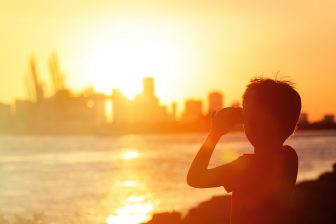
WHO: Community-led approach promotes physical activity among children in Reykjavik
Living in urban environments can pose a variety of health-related challenges. Limited opportunities to keep active, alcohol and other substance abuse, and social and financial inequity all contribute to unhealthy lifestyles, and some of these factors are closely interconnected.
Is it possible to resolve more than one of these issues by applying holistic methods targeting multiple health risks? Reykjavik leads by example.
Preventing alcohol, tobacco and other harmful substance use, especially among youth, is an ongoing challenge for many cities in the WHO European Region. Research indicates that strengthening and supporting personal and social protective factors promotes mental and physical health and well-being and reduces the risk of young people engaging in problematic alcohol and other substance use, says the World Health Organization.
This requires shifting the focus “upstream”, to avoid having to react to subsequent “downstream” consequences, often calling for complex and urgent interventions through the health, legal and justice systems. The Icelandic Prevention Model (IPM) is such a collaborative upstream model, designed to reduce known risk factors and intervene early within communities, schools and family contexts.
“In Reykjavik, we have been implementing the IPM for many years now. We look at the research and data available, talk and engage with scholars from different backgrounds, and finally work closely with people in the field, who are experts by experience. This creates a dialogue among research, policy and practice,” explains Harpa Þorsteinsdóttir, Public Health Project Director from Reykjavik, which is a member of the WHO European Healthy Cities Network.
The IPM includes regular measuring of the risk and protective factors found in four main intervention domains: a) parents and family; b) school; c) peer group; and d) leisure time outside of school.
During a study, the city administration became aware that children living in Breiðholt, a south-eastern district of Reykjavik, had lower levels of participation in sport and leisure activities than those in other neighbourhoods and decided to address this discrepancy.
Coalition of stakeholders – policy-makers, families and local leading figures
Every young person aged 6–18 in Reykjavik benefits from a leisure card, which is a grant system offering a donation of about €400 a year, which parents can use to pay for a child’s attendance in sports and leisure activities or for purchasing or renting equipment.
“Families living Breiðholt did not take advantage of this opportunity as much as families in other districts, and while we have not investigated the causes specifically, we did take note of the fact that the residents are comprised of mostly low-income families and a largely foreign-born population,” explains Harpa, who supports the various stakeholders on the 3-year pilot project that started in 2020.
Efforts have focused on increasing the participation of children living in Breiðholt in sports and leisure activities, in the hope of facilitating social participation and the integration of children from different backgrounds in Icelandic society.
“One important action that resulted from this project came about after close consultation with school teachers and cultural ambassadors, such as religious leaders, who indicated the need to develop awareness-raising material in different languages, targeting girls in particular, to encourage a more active participation in sports,” emphasizes Harpa.
“We also set up a bus offering a shuttle service every weekday for after-school activities, driving children between school, sport and leisure centres, and back home,” she continues.
Two-way communication fosters trust
Involving the various groups of residents in the neighbourhood is key to increasing people’s interest in the initiative and building a relationship of trust between the community, the local authorities and service providers – such as dance and music teachers, swimming instructors and sports club managers.
“Our approach is one of continuous dialogue and close collaboration with figureheads from the community like school teachers, parents and all those who work and interact with children. It’s a 2-way communication in that we do not only send out information about what sport and leisure activities are available, but also receive information from those who are in direct contact with the individual child, to find something that suits them best.
“Teachers will reach out to us when they learn about a child not being engaged in any after-school activity and together with the parents, we find the best way forward,” explains Jóhannes Guðlaugsson, from the Breiðholt Service Centre.
“The Healthy Cities Network supports local authorities and communities to adopt and implement evidence-informed health and sustainable development strategies that improve local environments as well as community resources, which determine health and well-being for all – leaving no one behind.
“The approach devised in Reykjavik to promote physical activity in the district of Breiðholt is an excellent example of just that – an inclusive public health initiative that builds bridges between community members and authorities to develop local solutions to local challenges,” said Dr Kira Fortune, WHO/Europe Regional Advisor, Healthy Cities, Health Promotion and Well-being.
In the aftermath of COVID-19, significant investments are being made across the European Region to revive the economy and reduce inequalities. Cities are the places to focus on achieving multiple health and environmental gains. During the 72nd session of the WHO Regional Committee for Europe, on September 13, countries will have the opportunity to share their experiences in fostering healthier environments. In a side event, mayors and key actors will exchange their opinions on challenges and new initiatives to build urban resilience to the threats posed by environmental and climate risks.




